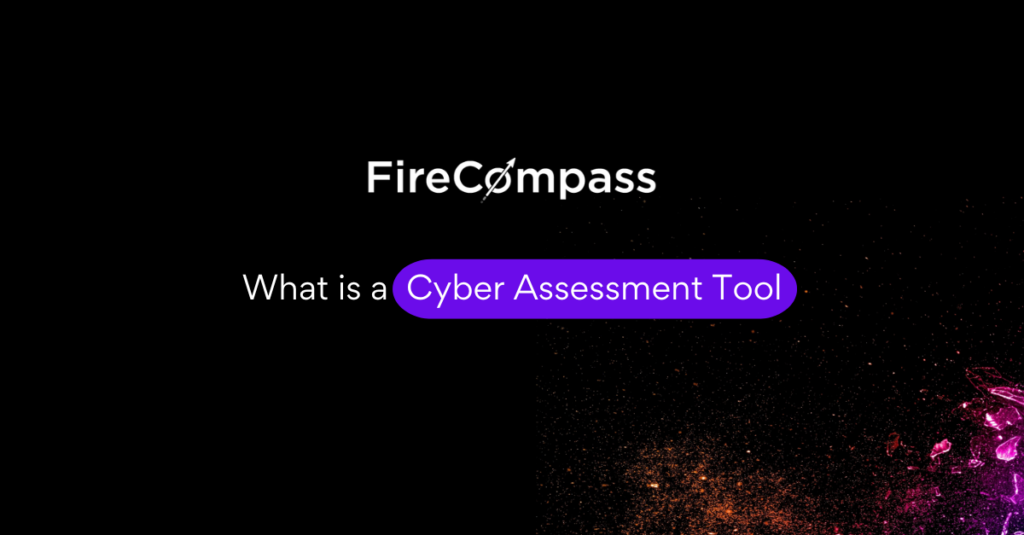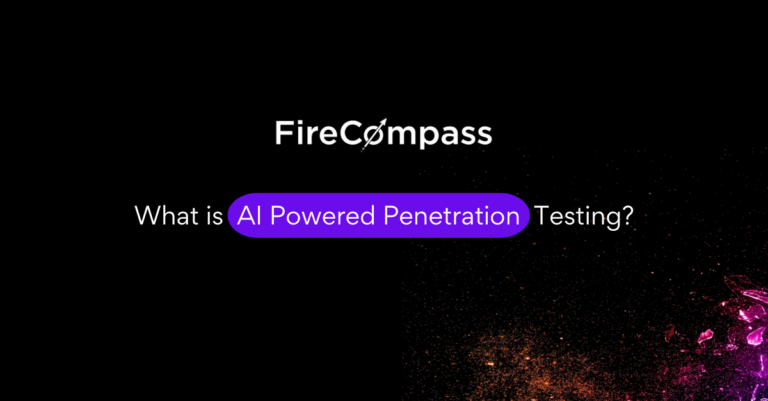Table of Contents
- What is a Cyber Assessment Tool?
- Understanding Cybersecurity Vulnerabilities, Threats, and Risks
- Importance of Regular Cyber Risk Assessments
- Key Features of Cyber Assessment Tools
- Types of Cyber Assessment Tools
- Automated Questionnaires
- Vulnerability Scanners
- Risk Assessment Surveys
- Phishing Simulations
- How Cyber Assessment Tools Work
- Steps to Perform a Cybersecurity Risk Assessment
- Benefits of Using Cyber Assessment Tools
- Selecting the Right Cyber Assessment Tool for Your Organization
- Conclusion: Building a Resilient Cybersecurity Posture with Cyber Assessment Tools
What is a Cyber Assessment Tool?
A cyber assessment tool is a specialized software application designed to help organizations identify, evaluate, and mitigate vulnerabilities within their IT infrastructure. These tools provide a comprehensive analysis of an organization’s cybersecurity posture by scanning for weaknesses across various digital assets, including networks, endpoints, applications, and cloud environments. By leveraging advanced algorithms and threat intelligence, cyber assessment tools can pinpoint specific vulnerabilities that may be exploited by malicious actors.
The primary function of a cyber assessment tool is to facilitate a systematic evaluation of potential threats and risks. This involves categorizing vulnerabilities, assessing their potential impact, and prioritizing them based on the likelihood of exploitation. Organizations can use these insights to develop targeted remediation strategies, so that resources are allocated effectively to address the most critical security gaps.
In an era where cyber threats are increasingly sophisticated, employing a cyber assessment tool is essential for maintaining a robust security posture. Regular assessments not only help organizations stay compliant with industry regulations but also enhance their overall resilience against evolving cyber threats. By integrating these tools into their cybersecurity strategy, organizations can proactively manage risks and safeguard their digital assets.
Understanding Cybersecurity Vulnerabilities, Threats, and Risks
In cybersecurity, it is crucial to differentiate between vulnerabilities, threats, and risks, as each term carries distinct implications for an organization’s security posture. Vulnerabilities refer to weaknesses or flaws in an organization’s infrastructure, such as outdated software, misconfigured systems, or inadequate access controls. These vulnerabilities can serve as entry points for cybercriminals.
Threats, on the other hand, encompass potential actions or events that could exploit these vulnerabilities. This includes various attack vectors such as ransomware, phishing schemes, and Distributed Denial of Service (DDoS) attacks. Understanding the nature of these threats is essential for organizations to anticipate and prepare for potential breaches.
Finally, risks represent the combination of vulnerabilities and threats, quantifying the potential impact on the organization if a threat successfully exploits a vulnerability. Risk assessment involves evaluating the likelihood of such events occurring and their potential consequences, enabling organizations to prioritize their cybersecurity efforts effectively. By comprehensively understanding these concepts, organizations can better utilize cyber assessment tools to identify weaknesses, assess threats, and implement robust risk management strategies.
Importance of Regular Cyber Risk Assessments
Regular cyber risk assessments are vital for maintaining a robust cybersecurity posture. As cyber threats evolve rapidly, organizations must continuously evaluate their defenses to identify new vulnerabilities and potential attack vectors. Conducting periodic assessments allows organizations to stay ahead of emerging threats, so that their security measures remain effective against the latest tactics employed by cybercriminals.
Moreover, regular assessments help organizations comply with industry regulations and standards, such as GDPR, HIPAA, and PCI DSS. These frameworks often mandate routine evaluations of security practices, making cyber risk assessments not just a best practice but a legal requirement for many businesses.
Additionally, frequent assessments foster a culture of security awareness within the organization. By involving employees in the assessment process, organizations can educate their workforce about potential risks and the importance of adhering to security protocols. This proactive approach not only mitigates risks but also enhances the overall security posture.
In summary, regular cyber risk assessments are essential for identifying vulnerabilities, compliance and promoting a security-conscious culture, ultimately safeguarding an organization’s digital assets and reputation.
Key Features of Cyber Assessment Tools
Cyber assessment tools come equipped with a variety of features designed to enhance an organization’s cybersecurity posture. One of the primary features is vulnerability scanning, which systematically identifies weaknesses within the IT infrastructure, including networks, applications, and endpoints. This allows organizations to prioritize remediation efforts based on the severity of the vulnerabilities discovered.
Another critical feature is automated reporting, which generates detailed reports on the assessment findings. These reports often include actionable insights and recommendations, enabling security teams to address vulnerabilities effectively.
Integration capabilities are also essential, as many cyber assessment tools can seamlessly integrate with existing security information and event management (SIEM) systems, threat intelligence platforms, and incident response tools. This integration enhances the overall security ecosystem by providing a comprehensive view of the organization’s risk landscape.
Lastly, user-friendly dashboards offer real-time visibility into the organization’s security posture, allowing stakeholders to monitor progress and make informed decisions. By leveraging these key features, organizations can effectively identify, assess, and mitigate cyber risks, ultimately strengthening their defenses against evolving threats.
Types of Cyber Assessment Tools
Cyber assessment tools come in various forms, each serving distinct purposes in the cybersecurity landscape.
- Automated Questionnaires: These tools facilitate the collection of data regarding an organization’s cybersecurity practices. By deploying vendor-specific surveys, organizations can assess third-party risks and understand the security posture of their partners.
- Vulnerability Scanners: These tools perform automated scans of networks, applications, and systems to identify known vulnerabilities. They provide insights into potential entry points for attackers, enabling organizations to prioritize remediation efforts.
- Risk Assessment Surveys: These surveys evaluate the likelihood and impact of various cyber threats on an organization’s assets. They help in quantifying risks and determining the necessary controls to mitigate them.
- Phishing Simulations: These tools test employees’ awareness of phishing attacks by simulating real-world phishing attempts. They help organizations gauge their susceptibility to social engineering attacks and improve employee training.
- Compliance Assessment Tools: These tools make sure that organizations meet regulatory requirements and industry standards, such as GDPR, HIPAA, or PCI-DSS. They help in identifying gaps in compliance and provide recommendations for remediation.
By utilizing a combination of these tools, organizations can create a robust cybersecurity framework that addresses vulnerabilities and enhances overall security posture.
How Cyber Assessment Tools Work
Cyber assessment tools operate through a systematic approach to identify, evaluate, and mitigate cybersecurity risks. Initially, these tools gather data from various sources, including network configurations, user permissions, and application settings. This data collection can be automated through vulnerability scanners or manual input via questionnaires.
Once the data is collected, the tools analyze it against a database of known vulnerabilities and threat vectors. This analysis helps in identifying potential weaknesses in the organization’s infrastructure, such as outdated software, misconfigured settings, or inadequate access controls.
Following the identification of vulnerabilities, cyber assessment tools generate comprehensive reports that outline the findings. These reports typically include risk ratings, potential impacts, and actionable recommendations for remediation. Organizations can prioritize these recommendations based on the severity of the vulnerabilities and their potential impact on business operations.
Additionally, many cyber assessment tools offer continuous monitoring capabilities, allowing organizations to track their security posture over time. This ongoing assessment helps in adapting to the evolving threat landscape, for security measures to remain effective against new and emerging cyber threats. By integrating these tools into their cybersecurity strategy, organizations can proactively manage risks and enhance their overall security resilience.
Steps to Perform a Cybersecurity Risk Assessment
Performing a cybersecurity risk assessment involves a structured process to identify and mitigate potential threats. Here are the key steps:
- Identify Assets: Begin by cataloging all digital assets, including hardware, software, and data. Understanding what needs protection is crucial.
- Identify Vulnerabilities: Use cyber assessment tools to scan for vulnerabilities within the identified assets. This includes checking for outdated software, misconfigurations, and weak passwords.
- Assess Threats: Evaluate potential threats that could exploit identified vulnerabilities. This includes analyzing historical data on cyber incidents relevant to your industry.
- Determine Risk Levels: Combine the likelihood of a threat exploiting a vulnerability with the potential impact on the organization. This helps prioritize risks based on severity.
- Develop Mitigation Strategies: Create a plan to address identified risks. This may involve patching vulnerabilities, enhancing security protocols, or implementing new technologies.
- Implement Controls: Execute the mitigation strategies and to keep security controls in place.
- Review and Update: Regularly revisit the assessment process to adapt to new threats and changes in the organizational environment, for continuous improvement in cybersecurity posture.
Benefits of Using Cyber Assessment Tools
Cyber assessment tools provide numerous advantages that enhance an organization’s cybersecurity posture. Firstly, they offer comprehensive visibility into the security landscape, allowing organizations to identify vulnerabilities and threats across their entire digital infrastructure. This visibility is crucial for prioritizing remediation efforts based on risk levels.
Secondly, these tools facilitate proactive risk management. By regularly assessing the security environment, organizations can detect potential issues before they are exploited by malicious actors, significantly reducing the likelihood of a successful cyber attack.
Additionally, cyber assessment tools often come equipped with automated reporting features, streamlining the documentation process for compliance and audits. This is particularly beneficial for organizations needing to meet regulatory requirements or demonstrate due diligence to stakeholders.
Moreover, they enable collaboration among teams by providing a centralized platform for security assessments, making it easier for IT and security teams to work together on remediation efforts.
Finally, utilizing these tools can lead to cost savings in the long run. By identifying and addressing vulnerabilities early, organizations can avoid the financial repercussions associated with data breaches, including recovery costs, legal fees, and reputational damage.
Selecting the Right Cyber Assessment Tool for Your Organization
Choosing the appropriate cyber assessment tool is critical for effectively managing your organization’s cybersecurity risks. Start by evaluating your specific needs and objectives. Consider the size of your organization, the complexity of your IT environment, and the regulatory requirements you must meet.
Next, assess the features offered by various tools. Look for capabilities such as automated vulnerability scanning, risk assessment surveys, and integration with existing security solutions. The tool should provide comprehensive coverage across your digital assets, including cloud services, endpoints, and third-party vendors.
User-friendliness is another essential factor. A tool that is intuitive and easy to navigate will facilitate quicker adoption and more effective use by your team. Additionally, consider the level of customer support and training provided by the vendor, as this can significantly impact your ability to leverage the tool effectively.
Finally, evaluate the cost versus the potential return on investment. While some tools may have a higher upfront cost, their ability to prevent costly breaches and streamline compliance can justify the expense. By carefully considering these factors, you can select a cyber assessment tool that aligns with your organization’s cybersecurity strategy and enhances your overall security posture.
Conclusion: Building a Resilient Cybersecurity Posture with Cyber Assessment Tools
In an era where cyber threats are increasingly sophisticated and pervasive, leveraging a cyber assessment tool is no longer optional but essential for organizations of all sizes. These tools provide a structured approach to identifying vulnerabilities, assessing risks, and implementing effective mitigation strategies. By regularly conducting cyber risk assessments, organizations can gain critical insights into their security posture, enabling them to prioritize remediation efforts and allocate resources effectively.
Moreover, the integration of cyber assessment tools into your cybersecurity framework fosters a proactive culture of security awareness among employees. This not only helps in minimizing the attack surface but also enhances compliance with regulatory requirements. As cyber threats continue to evolve, the ability to adapt and respond swiftly is paramount.
For organizations looking to enhance their cybersecurity measures, exploring options like Continuous External Attack Surface Management (EASM) can be beneficial. FireCompass’s EASM combines passive and active reconnaissance to discover, monitor, and mitigate cyber threats. Additionally, Continuous Automated Penetration Testing can help organizations continuously discover assets and find critical risks in a timely manner. For more information, visit FireCompass for comprehensive solutions in continuous automated red teaming, penetration testing, and attack surface management.










